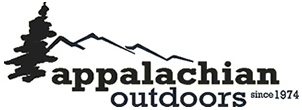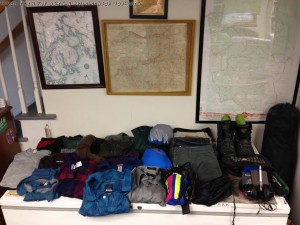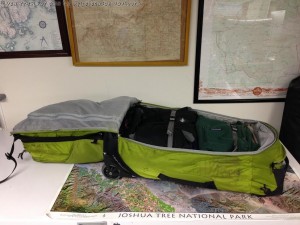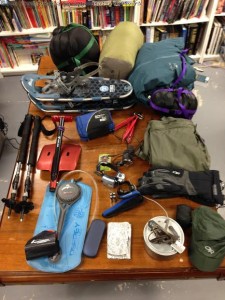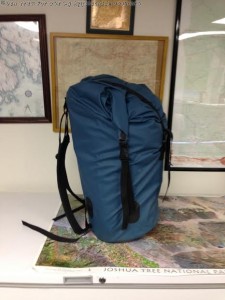By: Dan Trew
I am no stranger to the restrictive airline baggage system so my first assumption was that I would have to be very creative with how I packed for this adventure. As it turns out, Amtrak’s carry-on policies are more lenient than the checked baggage for airline travel; score! I am allowed two bags (28x22x14) and a personal item (12x12x12). My baggage worries are naught.
Of course, the question of what to bring on this adventure is a big one. A solid eleven days of my life will be spent in the limited space of train cars, with another seven being hotels, and the remainder out of the back of a tiny rental car. Most of the items I bring will need to be packable, have multiple functions, and stand up to being transported halfway around the world. Fortunately, I work at place where that is a line on every item’s tag.
I decided that I would have dedicated purposes to my bags; I would live out of one that contains all of my essential clothing and equipment, and the other would hold all of my gear. Seeing how I already have experience living out of my osprey travel pack, that choice was easy. My other choice of bag was a little less easy. My osprey bag functions as a fully featured backpack with wheels, so I didn’t need to bring another pack. I opted to use my older Sealline 110L portage pack as the other bag. It could hold all of my gear, and I didn’t need to worry about it breaking, ever. Being a dry bag, I also know that I could leave it outside of my tent/car and not have to worry about its contents being exposed to anything. I could check it along for the portions of my train ride where I would need it and I am very sure it will be allow me to identify it at a long distance, should the need arise.
As for what I brought in my day-to-day bag, I focused on things I would need for the month and only brought the minimum number things I need to cover the longest train ride. Starting at the closest layer, I packed four pairs of Ex Officio underwear in 4 different colors so I know what day I am on and so I don’t wear the same pair twice in a row. I also packed along four base layers. Two long sleeve and two short, to wear underneath of my regular shirts and to act as night clothes. I love my Smartwool shirts and Icebreaker Oasis Top for this purpose because they are light and fit close to my body, meaning I don’t have any awkward bunching under my shirts.
I have three shirts that pull double-duty as base layers; two merino wool polos from Ibex and Black Diamond, and a blended long sleeve shirt from Nau. In the more casual shirts I packed, there are two different thickness Patagonia flannel shirts and a similar shirt from Nau, and one Prana shirt that I can wear in the warmer South. I also packed away a single semi-formal shirt, should I decide to go out to fancy restaurant during one of my city visits.
For my pant situation, I opted to go with lighter ones that I could move freely in over heavier, more restrictive pants. This saves me a little weight and also allows me to layer under them if I need to (and my legs are almost never cold). I chose from Prana pants, Toad & Co. pants, Mountain Hardware, Outdoor Research, and Organic Climbing pants.
I am very picky about my feet so I only trust a couple of shoes to do the job of transporting me across both urban and wilderness environments. I had good experiences in my Asolo Power Matics traipsing about Ireland, so those paired with my green Superfeet are my go-to shoes for mixed adventures. For general wear in less snowy climates I, of course, brought my Chacos. Sock wise I opted for two pairs of Fits socks (expedition and rugged weights), a pair of Darn Tough hiking socks and a pair of Wigwam Mills casual socks.
My general purpose insulation and protection comes from a Patagonia better sweater vest, a Nano Air jacket, and an Outdoor Research hard shell. With those three, I can dress for any level of weather the world can throw at me without having to go digging into my gear bag. I also packed along a classy Nau jacket, just in case I’m in need of a little more formal wear.
My daily life essentials also include a number of bandanas for use as everything from tissues to emergency mittens. Outside of clothing, I have packed all of my electronic chargers and devices into one small carrying bag. My camera carrying case is actually a brightly colored chalk bag. I find the fleece liner is perfect if I need to hurriedly take off a filter or need a safe place to stash my lens uncapped and the little pocket on the back can hold every accessory I need (extra battery, ND filter, UV filter, and intervalometer). I am also bringing a silk travel sheet for the first time. I expect it to be a much nicer sleeping arrangement than the blankets I can get on the train. Lastly, I never travel without a notebook and pen, there are just too many things I might need to write down not to bring one.
My gear bag is filled with things I will likely not need during my time spent on trains and in hotels, but will save my life out in the Montana wilderness. My Mountain Hardwear tent is long in the tooth, but has never failed me, so it gets first billing in things to take. It has survived several frigid adventures so far and with the ability to close all of the vents on it can make living in freezing temperatures tolerable.
For my sleep system, I have packed my unbranded arctic survival sleeping bag and a sleeping bag liner mated with my generation 1 ThermARest NeoAir. This system has already proven itself on numbers of other adventures so I took no chances here. For the actual adventure bits, I have packed away my, stuffed-to-the-gills, first aid kit that has everything that I may need.
I have brought snow shoes and collapsible trekking poles for my winter exploring. My collapsible snow shovel is required for backcountry activities in Glacier National park and also useful if my tiny rental car gets stuck.
For protection from the cold I have brought my Fission SV from Arc’Teryx Simple Guide pants from Patagonia, two Outdoor Research hats and a pair of Outoor Research gloves.
My primary cooking system is a WindPro stove from MSR because the fuel canisters for it are easily found and I don’t have to worry about the legality of transporting fuel bottles. I use a MSR quick 1 system pot because my stove, wind screens, and utensils all fit into it.
For navigation and general activity monitoring I have my Suunto Ambit 2 as well as a backup compass because I don’t trust technology to always work as well as a giant spinning hunk of iron at the center of the earth.
My water treatment method of choice for solo adventuring is the SteriPEN because it works better than chemicals in cold environments (I can drink the water immediately, no taste) but I also have a backup chemical in my first aid kit as well as the option to boil water/melt snow on my stove. To carry that water I have my Osprey hydration bladder and a backup soft-sided water bottle with our logo on it in case my bladder fails or I want to rep an awesome store. I also have a hard sided Nalgene bottle to use my SteriPEN with.
Also important to note are the things that let me see: an older model Icon headlamp from Black Diamond and my “hiking” glasses (they have flexible frames and the lenses are scratch resistant).
All-in-all that is what I brought on this voyage. Packed and ready to go, I still have space to bring back souvenirs and other travel detritus that seems to fill up suitcases as trips progress.
